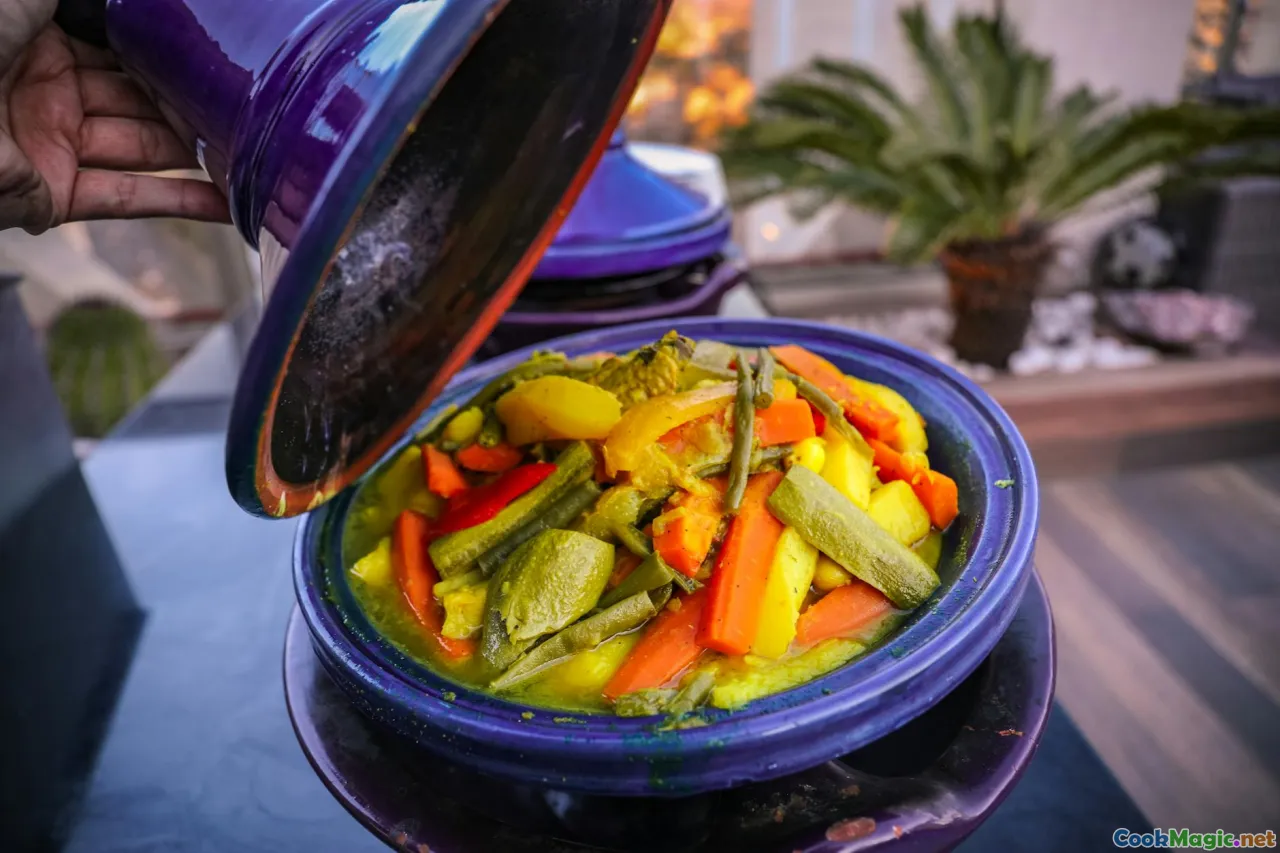Vegetarian Twists on Classic Moroccan Recipes
7 min read Discover inventive vegetarian interpretations of beloved Moroccan dishes, blending vibrant flavors, rich spices, and cultural heritage for a plant-based culinary journey. May 12, 2025 18:00
Vegetarian Twists on Classic Moroccan Recipes
Moroccan cuisine, with its mesmerizing blend of spices, vibrant colors, and centuries-old traditions, has long captivated food enthusiasts around the world. Known for dishes like tagines, couscous, and pastillas, Morocco’s culinary heritage is a tapestry woven with Arab, Berber, Mediterranean, and sub-Saharan influences. But what happens when we reimagine these beloved classics through a vegetarian lens? The result is a delightful exploration of flavors, textures, and aromas that honor tradition while embracing plant-based innovation.
A Cultural and Culinary Tapestry
Moroccan food is more than just sustenance; it’s a reflection of history, geography, and social fabric. Food plays a central role in communal gatherings, religious celebrations, and daily life. The use of spices like cumin, coriander, saffron, and cinnamon creates sensory tapestries that evoke warmth and comfort.
Traditionally, Moroccan dishes rely heavily on meats such as lamb, chicken, and beef, complemented by vegetables, legumes, and grains. However, given Morocco’s rich agricultural heritage—abundant with lentils, chickpeas, carrots, and eggplants—vegetarian dishes have long existed in local cuisine, often as hearty, filling options for fasting periods or vegetarians.
Today, modern chefs and home cooks alike are embracing vegetarian twists, inspired by health trends, ethical considerations, and a desire to preserve cultural authenticity while innovating.
Embracing Vegetables: The Heart of the Transformation
The key to crafting compelling vegetarian Moroccan recipes is to leverage the natural flavors of vegetables and legumes, enhanced by the signature spice blends and cooking techniques. Here are some common ingredients and how they can be elevated:
- Eggplants: Their smoky, tender flesh lends itself beautifully to stews and dips.
- Chickpeas & Lentils: Protein-rich staples that add heartiness.
- Carrots & Zucchini: Sweet and savory, perfect for tagines and salads.
- Squash & Pumpkin: Their natural sweetness complements Moroccan spices.
- Preserved Lemons & Olives: Add brightness and depth.
Spice Blends and Flavor Foundations
Moroccan cuisine is renowned for its complex spice mixes, notably ras el hanout, a fragrant blend of over 30 spices. For vegetarian recipes, this spice mix provides a robust foundation.
Additionally, ingredients like harissa(a spicy chili paste),cinnamon, turmeric, and ginger are essential to evoke authentic Moroccan flavor profiles.
Reinvented Dishes: A Culinary Journey
1. Vegetarian Tagine: A Symphony of Vegetables
Traditional tagineis a slow-cooked stew named after the earthenware pot. To create a vegetarian version, select seasonal vegetables like carrots, zucchini, bell peppers, and eggplants.Preparation:
- Sauté onions and garlic in olive oil until fragrant.
- Add spices: cumin, paprika, ras el hanout, and cinnamon.
- Layer in hearty vegetables and chickpeas.
- Pour in vegetable broth and add preserved lemons and olives.
- Simmer slowly until vegetables are tender and flavors meld.
The result is a fragrant, melt-in-your-mouth dish with a complex aroma, perfect served over fluffy couscous or bulgur.
2. Lentil & Vegetable Couscous
A staple in Moroccan homes, couscous can be transformed into a vibrant, veggie-packed dish.
Method:
- Prepare fluffy couscous with vegetable broth.
- Sauté diced carrots, zucchini, and bell peppers with garlic and spices.
- Mix in cooked lentils and sprinkle with fresh herbs like cilantro and parsley.
- Serve with a drizzle of preserved lemon juice for a bright finish.
This dish combines textures and flavors, offering a wholesome, satisfying meal.
3. Vegetable Pastilla: A Crunchy Pastry
While traditional pastillas are filled with pigeon or chicken, vegetarian versions often feature mushrooms, spinach, and walnuts.
Preparation:
- Sauté mushrooms, spinach, onions, and spices.
- Mix with chopped walnuts and a touch of cinnamon.
- Fill thin layers of phyllo dough, fold into triangles, and bake until golden.
The crispy pastry paired with the savory filling offers an unforgettable culinary experience.
4. Spiced Bean & Aubergine Stew
This hearty dish combines eggplant and kidney beans simmered in a tomato-based sauce infused with Moroccan spices.
Highlights:
- The smoky eggplant absorbs the rich spices.
- The beans add protein and texture.
- Serve with crusty bread or over rice.
Personal Insights and Cultural Reflections
In my travels through Morocco, I’ve observed how traditional dishes adapt to modern dietary preferences without losing their soul. During a visit to a family-owned riad in Marrakech, I was introduced to a vegetable tajine that had been passed down through generations—yet, in today’s kitchen, it’s often prepared with seasonal vegetables and plant-based substitutes.
What strikes me most is the communal aspect of Moroccan cuisine. Sharing vegetarian versions of these dishes fosters inclusivity, allowing everyone at the table to partake in the vibrant tapestry of flavors.
Moreover, embracing vegetarian twists encourages sustainable cooking practices and highlights the versatility of Moroccan spices and ingredients. It’s a culinary revolution rooted in tradition, where innovation honors history.
Final Thoughts: A Feast for All Senses
Reimagining Moroccan classics through a vegetarian lens is more than a trend; it’s a celebration of cultural resilience and culinary creativity. From the aromatic depths of a slow-cooked tagine to the crispy layers of a vegetable pastilla, each dish invites you to experience Morocco’s rich flavors and storytelling through food.
So, whether you’re a seasoned vegetarian, a curious omnivore, or a home cook seeking new inspiration, these twists open a world of possibilities. They remind us that food is a universal language—one that bridges tradition and innovation, history and future, all in a single, delicious bite.









